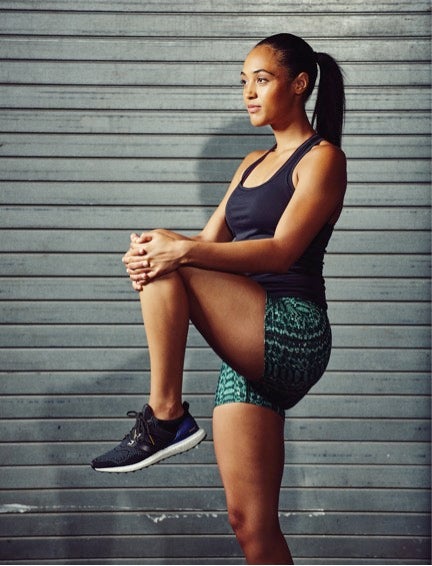Do These Moves To Prevent Feet And Ankle Injuries


Our feet and ankles act as our steering feedback. There are more mechanoreceptors in the foot than anywhere else in the body. This means they tell our nervous system how to adapt to changes in terrain when we run—which is especially crucial on trails.
It’s true what the kid’s song says about the foot bone being connected to the ankle bone, and the ankle bone to the knee bone. If you are not moving properly at your feet and ankles, you could end up with a knee injury or even neck pain. Seriously.
When it comes to these lower extremities, there are two common issues that runners face: lack of ankle mobility (not being able to bend at the ankle joint) and excessive pronation (an inward collapsing of the foot, which can eventually lead to a collapsed arch).
By taking the time to warm up, stretch and roll out your feet, ankles and calves before heading out for a trail run, you are fine-tuning your ability to adapt to the terrain and absorb the shock of running. This will not only improve your performance but also decrease your risk of injury. Perform these exercises barefoot to get the most out of the movements.
Golf Ball Roll
The connective tissue on the bottom of your foot, known as fascia, can often get extremely tight and eventually cause painful plantar fasciitis. Use a golf or lacrosse ball to release the tension in this fascia. Store a ball in your running shoes and before lacing up, spend at least 1 minute massaging the bottom of each foot.
Open Half Kneel
Kneel on your left knee and with your right foot flat on the floor and turned out. Keeping the heel in contact with the ground, drive the right knee over the pinky toe, working on increasing the range of motion at the ankle. Perform 5–10 reps on each side.
Calf Foam Roll
If the calf muscles are tight, you will be unable to have proper ankle mobility. This can lead to overpronation, which will affect your shock-absorbing capabilities. Spend 1 to 2 minutes foam rolling each calf before you run. Roll each calf with the leg rotated in for 5–10 reps, straight for 5–10 reps and rotated out for 5–10 reps.
Hip Thigh Extension
One of the reasons pronation happens is because the glutes aren’t firing properly. This exercise will switch on the glutes and improve the function of your feet and ankles. Lie on your back with one foot firmly planted on the ground and the other leg straight out. Lift your hips up and your leg in line with your other thigh, and hold for 2 counts then repeat. Perform 10 reps on each side.
Squats
Lunges and squats test strength and mobility in your feet and ankles. By performing a set of bodyweight squats before you head out for a run, you can pay attention to what may still feel restricted. Dropping into a squat takes ankle mobility. As you perform the squat, does one ankle feel more restricted than the other? If so, you may want to repeat one of the mobility exercises in this workout on that side. Perform 10 squats.
Front-to-Back Leg Swings
Stand behind a chair, balance on one leg, using the chair for support if needed, and swing the free leg to the front of you and then to the back. Pay attention that your standing leg remains firmly planted on the ground and does not pronate. Perform these barefoot to really put your standing foot to work. Perform 10 swings on each side.
Standing Calf Stretch
Tight calf muscles will lead to overpronation and lack of ankle flexibility. Standing with one foot behind the other in a split stance, push the back heel into the ground. Try to pull your shin toward your toes, feeling a stretch in the back calf. Hold for 30 seconds on each side.
Some tips to help:
BARE IT… For stronger feet, kick off your shoes. Make an effort to spend more time barefoot, especially walking around in the grass or on changing terrain.
DIG IT… Self-Myofascial Release (SMR), also known as the poor man’s massage, is a technique using a ball, a foam roller or another tool to give yourself a rubdown. This can be more effective than a “normal” massage, because you can pinpoint the areas you need to work on and really spend time releasing the tension. The Golf Ball Roll and Calf Foam Roll are forms of SMR and will make a big difference in the health of the tissues of your feet and ankles. Spend time every day doing massage work on an area where you feel extra sore or tight.
Read More On Taking Care Of Your Feet:
4 Products For Happy Runner Feet
5 Ways To Take Care Of Runner’s Feet






